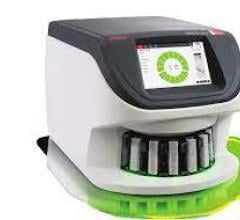
Greg Freiherr has reported on developments in radiology since 1983. He runs the consulting service, The Freiherr Group.
Call Me: How Cell Phones Can Make A Difference in Radiology

Image courtesy of pixabay
Nothing can — or should — replace the written radiology report as the way radiologists send their findings to referring physicians. But there are times when speed is of the essence, when interaction between radiologist and referring physician is critically important for the patient. At those times, says David Naeger, associate professor of clinical radiology at the University of California San Francisco, nothing is better than talking — and hospital-based cell phones can make that happen.
Research by Naeger and colleagues, published in 2014, documented that cell phone conversations with radiologists can help neurologists form differential diagnoses. In the research, radiologists and referring physicians reported increased satisfaction after these conversations and neurologists seemed especially pleased, according to Naeger. Demonstrating the utility of cell phone interaction was the frequency of conversations between neurologists and radiology residents, he said, three and six such discussions per night.
The idea of talking through a problem is hardly new. Neither is the idea of using cell phones for this purpose.
In a white paper distributed by the Swedish IT firm Sectra, the use of cell phones came up in research involving 78 referring physicians and 78 radiologists, all working in the United States. While all acknowledged the importance of formal reports, a consensus arose that the efficiency and value of the information could be improved by increasing communication between radiologists and referring physicians and “making it easier to get in touch with each other.” They suggested including the referring physician’s cell phone on the exam order and having a cell phone link to the referring clinician in PACS.
Erik M. Olson, M.D., of Radiology Associates, which operates three outpatient medical imaging centers in California, noted in a March 2015 newsletter article that referring physicians often want to discuss exams or have the radiologist pay attention to specific clinical detail. “Unfortunately, contacting a radiologist can be a time-consuming endeavor for a busy referring physician,” Olson wrote.
Calls to the front office and even to reading rooms can go unanswered. “The ideal way for a referring doctor to communicate with the radiologist is through the radiologist’s cell phone, equipped with capabilities for voicemail, text message and e-mail,” he wrote, adding the caveat that any texts must be HIPAA-compliant, referring to medical record numbers or patient initials rather than the patient’s full name.
In this respect, the cell phone puts a modern twist on “old school” communications, which used to happen when referring physicians would “drop in” on the reading room. But, if technology is going to be thrust into the breach between radiologists and referring physicians, why not use the most advanced capabilities of that technology?
An Australian neurosurgeon reported in 2012 the use of a video application on a smartphone to transmit an “entire series of patient neuroimaging” to consultant neurosurgeons. “With this information, combined with a clinical history, accurate management decisions were made,” wrote Ganeshwaran Shivapathasundram, M.D.
Whether it’s high-tech, low-tech or no-tech doesn’t matter. The trick is improving communications. The ultimate goal is to make it so the patient receives the best healthcare possible.
Editor's note: This is the second blog in a four-part series on smartphones and radiology. The first blog, “How Smartphones Can Make Radiologists Even Smarter,” can be found here.


 May 03, 2024
May 03, 2024 








